-
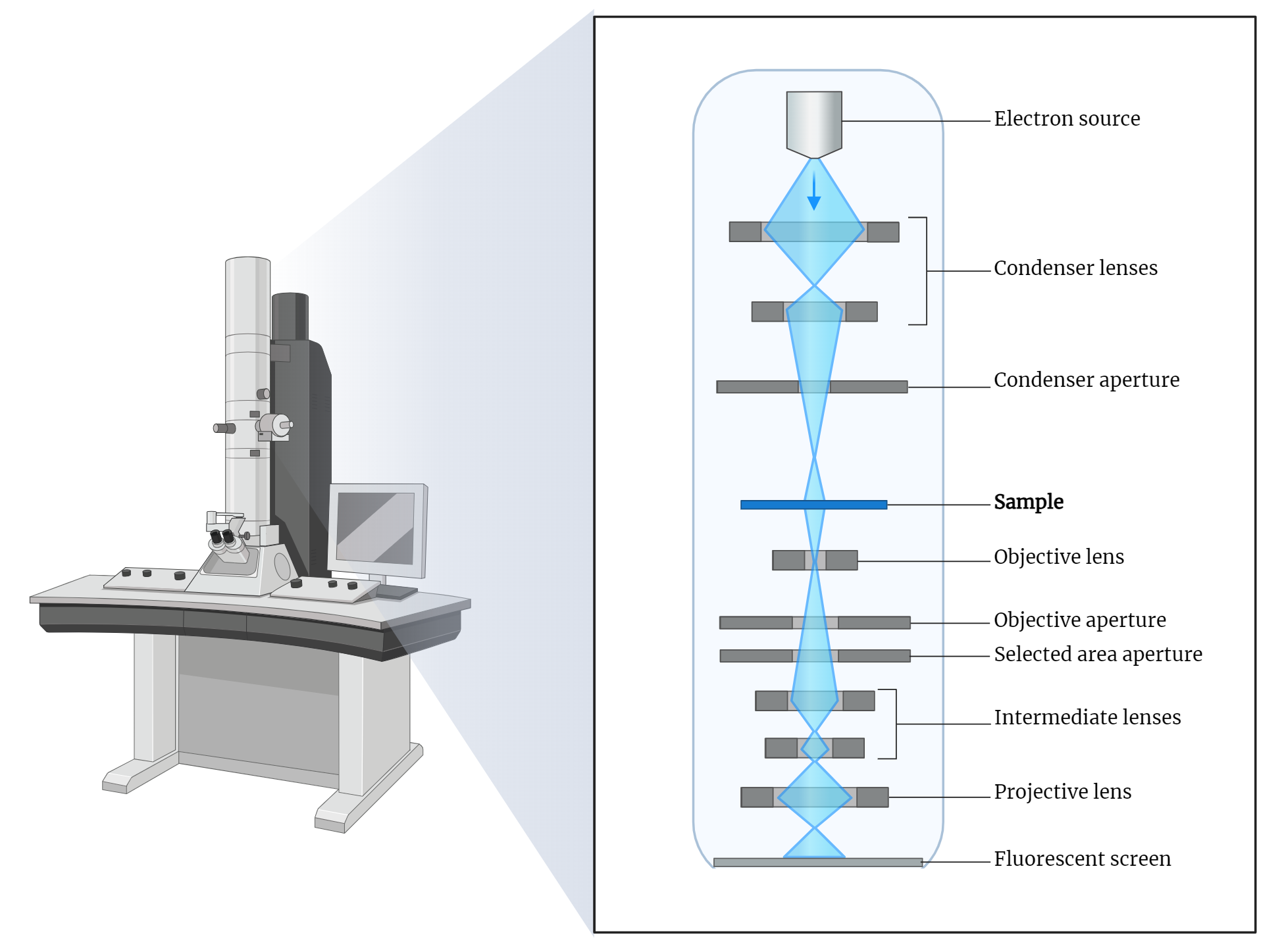
Transmission Electron Microscope (TEM)
The transmission electron microscope (TEM) is a groundbreaking tool in electron microscopy, first developed by Knoll and Ruska in the 1930s. It utilizes a focused electron beam to produce highly detailed images of thin specimens by detecting electrons transmitted through them. TEMs employ thermionic emission guns and can accelerate electrons to high potentials, enabling high-resolution…
-
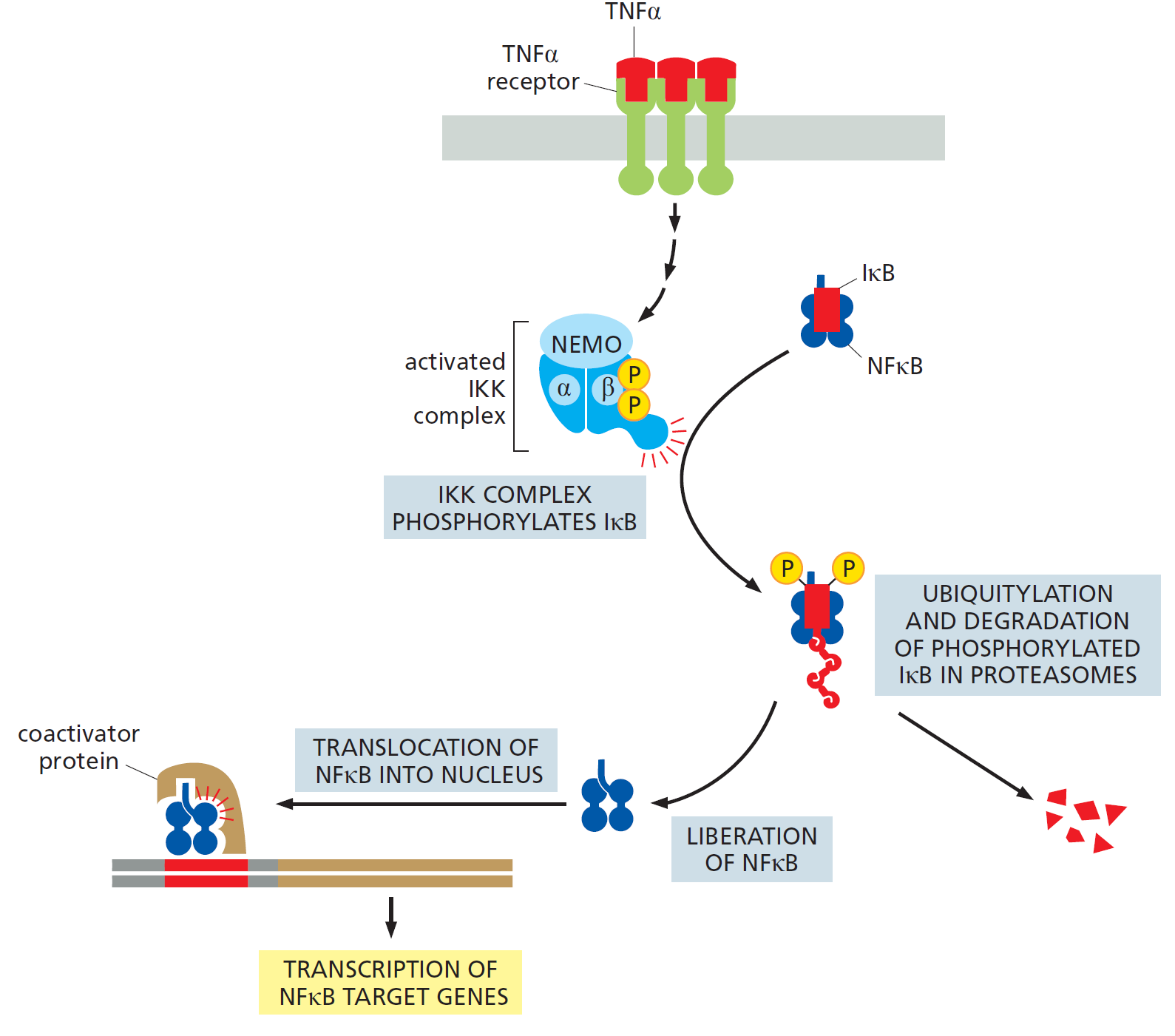
NFκB Signaling Pathway
NFκB Signaling Pathway Excerpt: The NFκB signaling pathway is a critical regulator of gene expression in response to stimuli like inflammation and infection. NFκB proteins, normally inactive due to IκB proteins, become activated upon signals such as TNFα. This leads to the degradation of IκB and the release of NFκB, which enters the nucleus to…
-
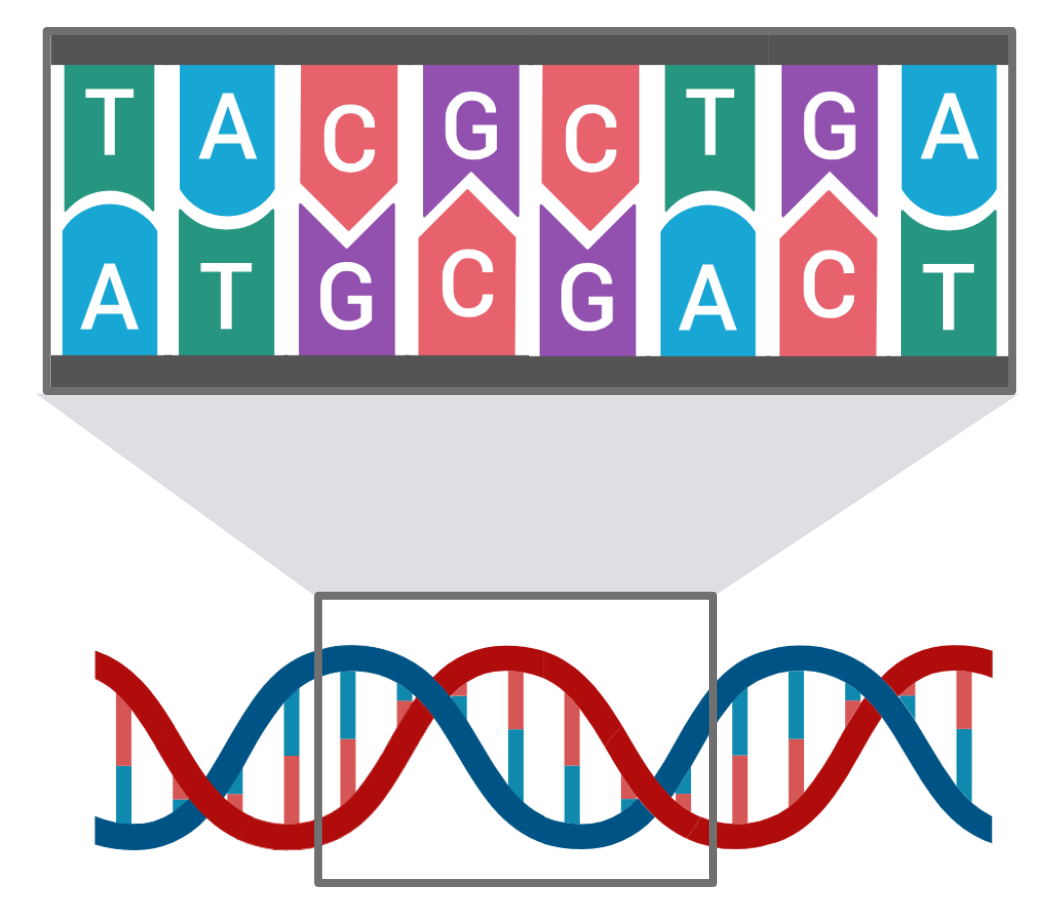
Genetic Code Overview
Here’s an excerpt from the provided text on the Genetic Code: The **Genetic Code** is a universal set of rules essential for translating genetic information into functional proteins. It operates on a **triplet code** system, where each **codon**, composed of three nucleotides, corresponds to a specific amino acid. This code is **non-overlapping** and **degenerate**, meaning…
-

Activation of the Mammalian Egg
In mammalian eggs, the rise in cytoplasmic calcium ions (Ca2+) plays a crucial role in egg activation. Sperm-induced Ca2+ waves trigger events such as meiosis resumption, cortical granule exocytosis, and maternal mRNA release. Surprisingly, sperm-derived PLCζ, delivered during gamete fusion, is essential for Ca2+ oscillations and successful egg activation. These oscillations, regulated by various proteins,…
-
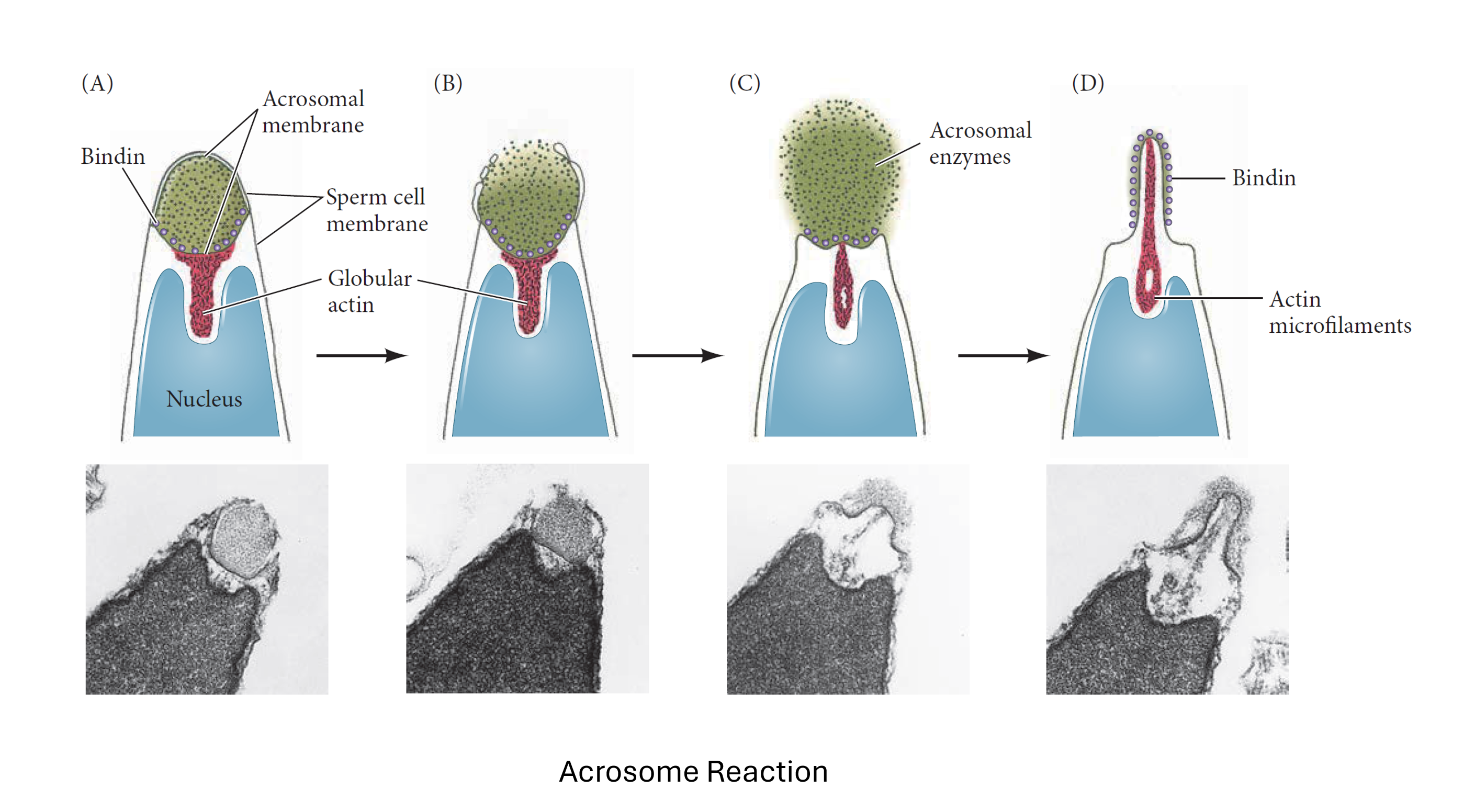
Acrosome Reaction
The acrosome reaction is a crucial process in fertilization, enabling the sperm to penetrate the egg’s protective layers and achieve fertilization. This reaction involves a series of biochemical and structural changes in the sperm’s acrosome, a cap-like structure covering the anterior part of the sperm head.
-
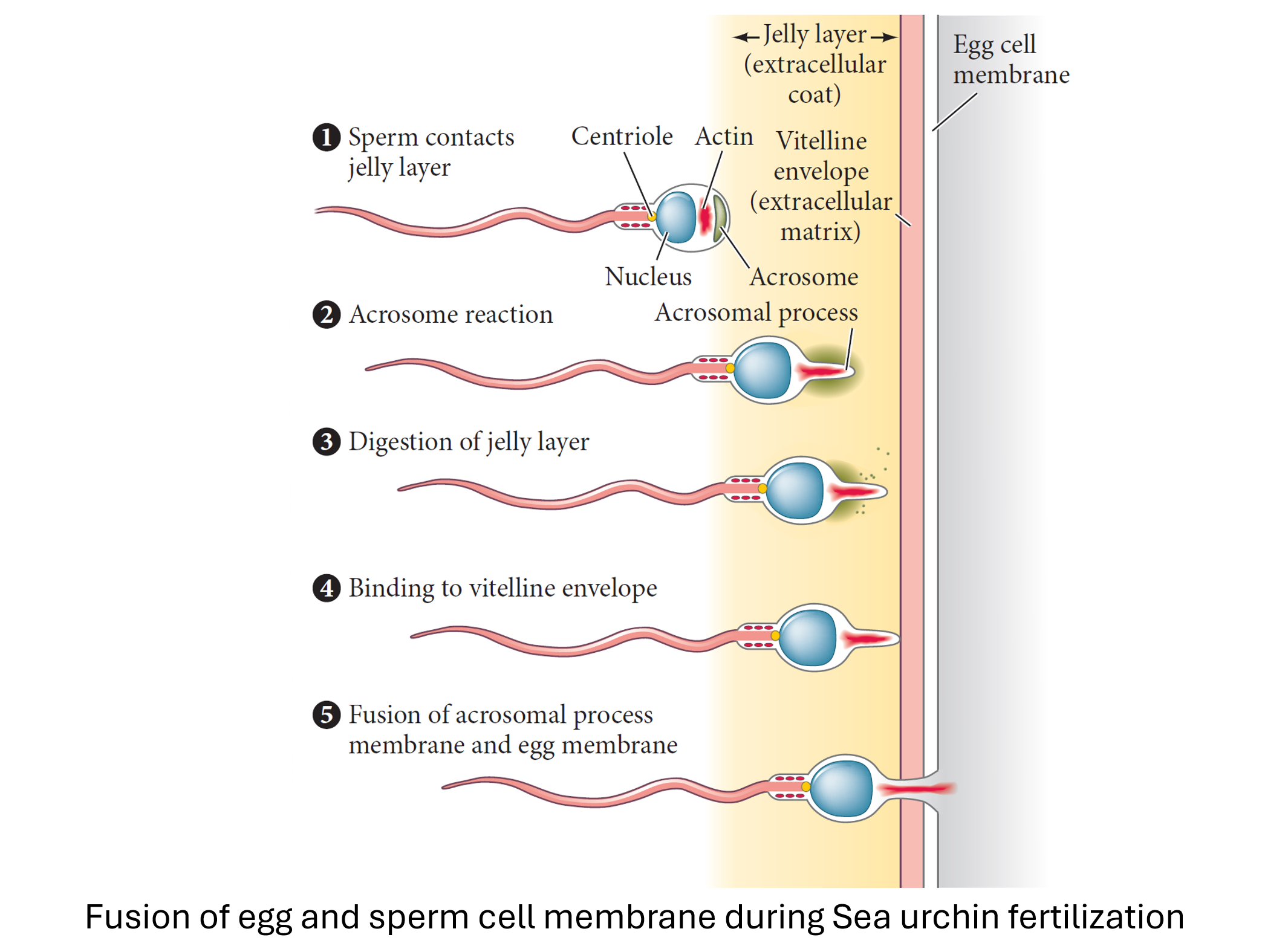
Fertilization
In the intricate dance of fertilization, mammalian eggs undergo fascinating processes. From pronuclear migration and DNA uncoiling to the interplay of mitochondria and cytoplasmic contributions, each step contributes to the formation of new life. Sperm-egg interactions, centrosomes, and the orchestration of mitotic spindles—all converge in this remarkable journey.
-
Objective Lenses of Microscopes
Discover the various types of objective lenses used in microscopes. Learn about achromatic, plan, apochromatic, and oil immersion lenses, their unique properties, and applications in microscopy. Choose the right lens for enhanced imaging and accurate observations.
-
Mendel’s Laws of Inheritance
Gregor Mendel’s groundbreaking research on pea plants led to the formulation of two fundamental laws of inheritance. The Law of Dominance explains how dominant and recessive traits are inherited, while the Law of Segregation elucidates the separation of alleles during meiosis. The Law of Independent Assortment further reveals the independent inheritance of different traits. These…
-
Structure of Egg
Delve into the intricate structure of mammalian eggs, from their cytoplasmic components to their nucleus, membrane, and interactions with sperm. Understand the crucial role of fertilization and egg development in the reproductive process.
-
Autonomous Specification
Delve into the realm of embryonic cell commitment through the lens of autonomous specification. This strategy, found in various organisms like snail Patella and tunicate embryos, involves the independent determination of cell fate within the egg cytoplasm. Discover how specific regions and factors influence gene expression, ultimately steering cells toward distinct destinies. Explore the groundbreaking…
-
Conditional Specification
Explore the fascinating concept of conditional specification in embryonic development, where cell destinies are shaped by interactions with neighboring cells. Unveil the significance of juxtacrine and paracrine factors, as well as mechanical stress, in determining cell fates. Discover how pivotal experiments by pioneers like Wilhelm Roux and Hans Dreisch challenged traditional notions of autonomy. Delve…
-
Syncytial Specification
Delve into the intricate strategy of syncytial specification, a unique approach to cell fate determination. Explore its fusion of autonomous and conditional aspects, witnessed in the fruit fly Drosophila melanogaster. Uncover the significance of the syncytial blastoderm—a shared cytoplasm containing multiple nuclei—and how it plays a pivotal role in the simultaneous establishment of cell identities…
-
Exons and Introns
Dive into the intricate world of gene transcription with a focus on exons and introns. Explore how eukaryotic genes differ from prokaryotic ones and uncover the roles of exons, coding sequences, and introns, non-coding segments, in shaping gene expression. Delve into the structure of the human β-globin gene as a case study, unraveling its various…
-
Hippo Signaling Pathway
The Hippo signaling pathway, initially discovered in Drosophila, plays a pivotal role in regulating organ size by orchestrating cellular processes such as growth, division, and apoptosis. Unlike traditional signaling pathways, Hippo lacks a specific ligand or receptor, instead relying on intricate interactions and key players to govern its intricate cascade. Notably, the loss of Hippo…
-
Stem Cells
Delve into the fundamental aspects of the stem cell concept through these study notes. Explore the intricacies of stem cell division, potency variations, and the role of progenitor cells. From totipotent and pluripotent stem cells to the significance of adult stem cells, grasp the essence of these versatile entities that drive cellular diversity and tissue…
-
Stem Cell Regulation
Dive into the intricate world of stem cell regulation with these comprehensive study notes. Explore the dynamic interplay between extracellular and intracellular factors that dictate stem cell behavior. From the pivotal role of the stem cell niche to the influence of cytoplasmic determinants, transcriptional networks, and epigenetic patterns, uncover the mechanisms that steer stem cells…
-
Pluripotent Stem Cells
Explore the realm of pluripotent stem cells through these insightful study notes. Unveil their significance in research and therapy, their origin in the mammalian inner cell mass, and the intricate regulatory mechanisms that maintain their pluripotency. Delve into the orchestration of gene expression, the roles of key transcription factors, and the interplay of cell-to-cell interactions…
-

Gastrulation: The Foundation of Life
Explore the pivotal process of gastrulation in animal development. Learn how cells rearrange to form germ layers, creating the foundation for body structures and axes. Understand the significance of this stage as we delve into movements, axes development, and its crucial role in shaping organisms.
-

The Cycle of Life in Frogs
Delve into the intricate life cycle of the leopard frog Rana pipiens, from the inception of gametogenesis and fertilization to the transformative journey of metamorphosis. Explore the stages of cleavage, gastrulation, and organogenesis that shape this remarkable amphibian’s development. Witness the astonishing metamorphosis from tadpole to land-dwelling adult frog. This essay provides a captivating insight…
-

The Cycle of Life
Embark on a journey through the intricate cycle of life, spanning the developmental odyssey of animals. Explore the stages from fertilization to birth, metamorphosis, and gametogenesis. Witness how cells rearrange, germ layers form, and organs emerge during organogenesis. Uncover the transformative power of metamorphosis and the pivotal role of gametogenesis in perpetuating life. This overview…
-
Sex Determination in Drosophila
Drosophila, commonly known as fruit flies, have long been a staple in genetic and developmental biology research. One of the most fascinating aspects of Drosophila biology is their sex determination process, intricately tied to their genetic makeup. The sex of these tiny organisms is dictated by a single pair of sex chromosomes, X and Y.…
-
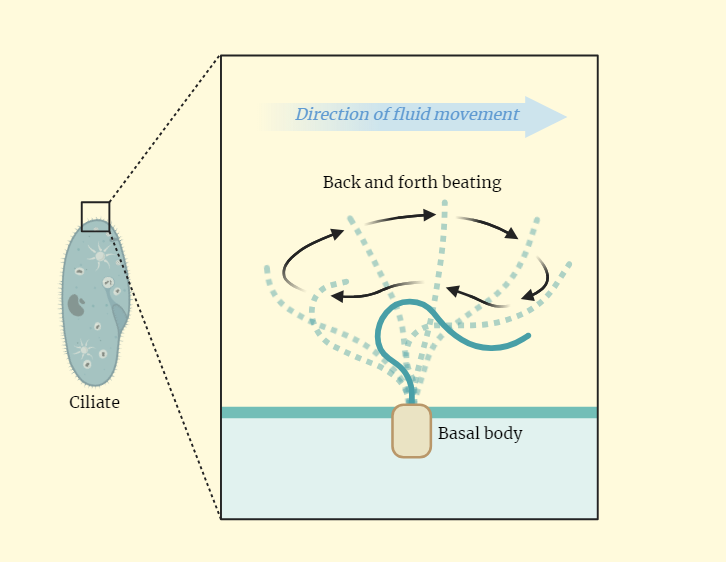
Ciliary locomotion
Explore the fascinating world of ciliary locomotion, where intricate hair-like structures known as cilia orchestrate a symphony of coordinated movement. These remarkable projections, found on certain cell surfaces, serve as nature’s propellers, driving processes vital to life. Delve into the mechanics of cilia, composed of microtubules arranged in an elegant “9+2” pattern. These structures, anchored…
-
Flagellary locomotion in euglena
Dive into the captivating realm of flagellar locomotion in Euglena, where whip-like flagella orchestrate intricate movements. Explore the molecular symphony of dynein motor proteins propelling these single-celled organisms, enabling navigation, feeding, and light-sensing. Uncover the secrets of metachronal waves and the elegant “9+2” microtubule arrangement. Join us in deciphering the remarkable world of flagellar dynamics…
-
Ciliary Locomotion in Paramoecium
Embark on a journey into the intricate world of ciliary locomotion in Paramoecium, where tiny hair-like cilia orchestrate remarkable movements. Explore the molecular choreography driven by dynein motor proteins, propelling this single-celled wonder through water. Delve into the “9+2” microtubule arrangement, unveiling the metachronal wave phenomenon. Witness cilia’s multifaceted role – from aquatic navigation to…
-

Secondary Sex Determination in Mammals
Explore the intricate realm of secondary sex determination in mammals, where hormones and genetic interplay shape diverse phenotypes. Uncover the two major phases and hormonal cues guiding the development of sexual characteristics. From internal and external genitalia to reproductive ducts, delve into the journey of female and male phenotypes. Discover conditions like pseudohermaphroditism and true…
-

Flagellar movement
Embark on a journey into the world of flagellar movement, where whip-like flagella orchestrate cellular dynamics. Traverse the intricate structure of microtubules, unravel the motor proteins propelling these movements, and decode the biochemical signals triggering their activation. From sperm’s voyage through the female reproductive tract to bacteria’s quest for sustenance, discover how flagella’s synchronized beats…
-

Human Nervous System
The human nervous system, a marvel of complexity, orchestrates communication and control throughout the body. Delve into its realms, from the intricate structure of neurons to the profound functions of the brain. Explore how sensory perception and motor responses are coordinated, while uncovering the mechanisms behind learning and memory. Discover the interplay of the central…
-

Ciliary movement
Discover the intricate world of ciliary movement—a remarkable process driven by tiny hair-like structures called cilia. From their structural composition to their role in propelling cells, fluids, and particles, delve into the mechanisms underpinning this fascinating phenomenon. Explore how cilia’s coordinated motion aids in functions like mucociliary clearance in the respiratory tract, fluid transport in…
-

Adrenal gland
The adrenal glands, located on top of each kidney, are essential endocrine organs responsible for producing and releasing hormones that regulate various physiological processes. This in-depth study note explores their location, histology, functions, and clinical significance. Understanding the adrenal glands is crucial for comprehending their role in maintaining stress response, metabolism, electrolyte balance, and blood…
-

FLIP (Fluorescence Loss in Photobleaching)
Discover the power of Fluorescence Loss in Photobleaching (FLIP), a technique used to investigate molecular dynamics within cells. Explore its applications in protein and membrane dynamics, protein-protein interactions, intracellular transport, and subcellular compartmentalization. FLIP provides valuable spatial and temporal information, allowing researchers to study biological processes in their natural state. Embrace the versatility of FLIP…
-

FRAP (Fluorescence Recovery After Photobleaching)
Fluorescence Recovery After Photobleaching (FRAP) is a powerful technique widely employed in the study of biomolecules within biological systems. By selectively bleaching a small region of a sample and monitoring the subsequent fluorescence recovery, FRAP enables the investigation of molecular mobility. Its applications encompass protein dynamics, intracellular organelle movements, cytoskeleton organization, membrane dynamics, intracellular transport,…
-

Atomic Force Microscopy (AFM)
Atomic Force Microscopy (AFM) is a powerful imaging technique used to visualize and manipulate materials at the nanoscale. By scanning a sharp probe over a sample surface, AFM measures the interaction forces between the probe and the sample, providing high-resolution images and information about surface properties. This study note delves into the principles, instrumentation, operational…
-

Phase Contrast Microscopy
Discover the power of a phase contrast microscope, an essential tool for enhancing sample contrast in fields like biology and materials science. Learn about its components, working principle, and applications in studying cell structures and analyzing materials. Explore the advancements in microscopy techniques and scientific instruments for improved research and imaging capabilities.
-

Light Microscopy
Light microscopy is a versatile technique used in various scientific disciplines such as biology, chemistry, and materials science. By illuminating a sample with light and capturing the transmitted image, this essential tool enables the study of cell structure, materials analysis, and scientific research. With its simplicity and ability to produce high-resolution images, light microscopy plays…
-

Fluorescence Microscope
A fluorescence microscope is an essential tool in science and technology, enabling high-resolution imaging of samples using fluorescence techniques. It is widely used in biology, chemistry, and materials science for analyzing cell structures, molecular imaging, and sample analysis. By exciting specific molecules and selectively detecting fluorescence, it provides valuable insights into biological samples and their…
-

Confocal Microscope
Embark on a fascinating journey into the world of confocal microscopy. Discover its role in high-resolution imaging, sample preparation, and applications in biology, chemistry, and materials science. Uncover the groundbreaking advancements made possible by selectively detecting fluorescence, enabling detailed study of biological samples and components. Witness the transformative power of confocal microscopy in unlocking the…
-

Transmission Electron Microscope (TEM)
Embark on a journey through the world of transmission electron microscopy (TEM). Explore its significance in materials science, biology, and chemistry. Discover the remarkable high-resolution imaging capabilities, sample preparation, and applications across various fields. Uncover the instrumental role of TEM in advancing scientific knowledge and understanding through its ability to reveal the internal structure of…
-

Scanning Electron Microscope (SEM)
Discover the powerful world of scanning electron microscopy (SEM). Explore its working principle, from the electron gun to image analysis. Uncover its applications in materials science, biology, geology, and semiconductor manufacturing. Gain insights into the remarkable high-resolution imaging capabilities of SEM and its significant impact on scientific discoveries and advancements.
-

Phospholipid Movement
Phospholipids, essential components of cell membranes, play a pivotal role in maintaining membrane integrity. Explore the dynamic movements of phospholipids through lateral and transverse diffusion, as well as the crucial processes of fusion and fission. Gain insights into the intricate dynamics of cell membranes and their significance in cellular function.
-

Thyroid Hormone Biosynthesis
Thyroid hormone biosynthesis is a complex process that takes place in the thyroid gland. This in-depth study explores the steps involved, including iodide uptake, oxidation, organification, coupling reactions, and hormone release. The regulation of this pathway through feedback mechanisms is also discussed. Understanding thyroid hormone biosynthesis is crucial for comprehending thyroid disorders and developing effective…
-

Osmosis Process
Explore the fascinating process of osmosis, where water moves across membranes to balance solute concentrations. Learn about its principles, factors influencing it, and examples of osmosis in plant roots, kidney function, and cellular dehydration. Gain insights into how osmosis plays a crucial role in maintaining water balance and cellular function in living organisms.
-

Diffusion
Explore the fascinating process of diffusion, where particles naturally move from areas of high concentration to low concentration. Delve into the principles, factors, and examples of diffusion to understand its significance in various scientific fields and everyday phenomena. Gain insights into how temperature, molecular size, and concentration gradients influence this fundamental process.
-

Cytokines
Cytokines are vital signaling molecules that play a crucial role in the immune response. This detailed study explores the functions, types, and significance of cytokines in various physiological processes, including inflammation and cell growth. It delves into the two main categories of cytokines: pro-inflammatory and anti-inflammatory cytokines, shedding light on their roles in initiating and…
-

T Cell Maturation
T cell maturation is a critical process in the development of functional T cells, which are key players in the adaptive immune response. Starting in the bone marrow and progressing through the thymus, immature thymocytes undergo positive and negative selection, ensuring the survival of T cells that can recognize foreign antigens while preventing autoimmunity. Upon…
-

Inflammation: a biological response
Inflammation is a complex biological response triggered by the immune system in response to injury, infection, or tissue damage. This study provides insights into the key components and mechanisms of inflammation, including immune cell activation and cytokine release. It explores the two main types of inflammation: acute and chronic, highlighting their characteristics and associations with…
-

Adaptive Immune Response
The adaptive immune response is a powerful defense mechanism that comes into play when the innate immune response falls short in eliminating pathogens. This intricate system involves specific antibodies produced by B cells, which bind to antigens, such as viruses and bacteria, marking them for destruction. Antibodies can neutralize pathogens, impeding their ability to infect…
-

Taenia solium
Embark on a detailed study of Taenia solium, the pork tapeworm, and its impact on human health. Explore its morphology, complex life cycle, pathogenesis, and clinical manifestations. Gain insights into effective treatments and preventive measures against this parasitic infection.
-

Gene Therapy: A study note
Gene therapy is a groundbreaking medical approach that holds tremendous potential for revolutionizing disease treatment. By altering the genetic material within cells, gene therapy aims to correct abnormal genes or introduce therapeutic genes to combat a wide range of conditions. This study note provides a comprehensive overview of gene therapy, exploring its principles, techniques, applications,…
-

DNA Microarray Technique
DNA microarray is a powerful technique used to study gene expression levels in a high-throughput manner. It involves hybridizing labeled target sequences to DNA probes on a microarray, allowing researchers to detect and quantify specific nucleic acid sequences. This study note explores the principles, procedure, applications, and limitations of DNA microarray, highlighting its role in…
-

Plasmolysis
Plasmolysis is the process by which a plant cell shrinks away from its cell wall when placed in a hypertonic solution. This study note explains the process, types, examples, and the significance of plasmolysis in plant biology and agriculture. Explore the effects of water and solute stress on plants.
Categories
- Anatomy (9)
- Animal Form and Functions (38)
- Animal Physiology (65)
- Biochemistry (33)
- Biophysics (25)
- Biotechnology (52)
- Botany (42)
- Plant morphology (6)
- Plant Physiology (26)
- Cell Biology (107)
- Cell Cycle (14)
- Cell Signaling (21)
- Chemistry (9)
- Developmental Biology (36)
- Fertilization (13)
- Ecology (5)
- Embryology (17)
- Endocrinology (10)
- Environmental biology (3)
- Genetics (59)
- DNA (27)
- Inheritance (13)
- Histology (3)
- Hormone (3)
- Immunology (29)
- life science (76)
- Material science (8)
- Microbiology (18)
- Virus (8)
- Microscopy (18)
- Molecular Biology (113)
- parasitology (6)
- Physics (3)
- Physiology (11)
- Plant biology (26)
- Uncategorized (7)
- Zoology (112)
- Classification (6)
- Invertebrate (7)




